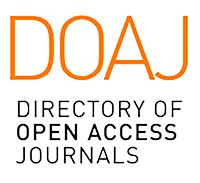
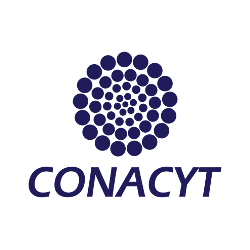
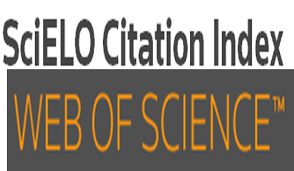

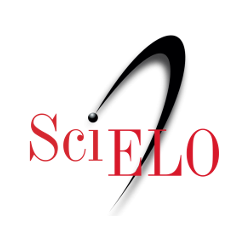
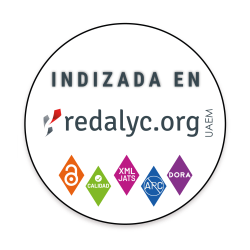

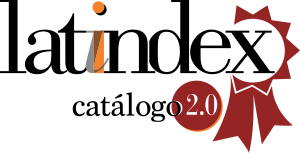









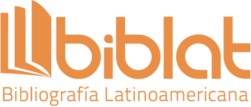
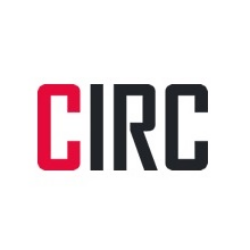
This article addresses linked topics which have been debated intensely in the specialized literature: it proposes to identify the rulers of Teotihuacán, and their palace, through iconographic analysis of images worked in different materials. I present new arguments in favor of my proposal that the figures wearing the Great Tasseled Headdress fulfilled the role of rulers of the city. I also analyze a set of images on ceramics which indicate that their palace, with martial attributes, was a triad of pyramids, probably also including a monumental ceremonial platform. I propose that a possible candidate for the seat of government of Teotihuacan is the archaeological triad of the Plaza of the Columns.
Sources
Armillas, Pedro. 1964. “Northern Mesoamerica.” In Prehistoric Men in the New World, edited by Jesse Jennings and Edward Norbeck. Chicago: University of Chicago Press.
Aveleyra Arroyo de Anda, Luis. 1964. Obras selectas del arte prehispánico. Mexico City: Museo Nacional de Antropología.
Ball, J. W. 1974. “A Teotihuacan-Style Cache from the Maya Lowlands.” Archaeology 27 (1): 2–9.
Berrin, Kathleen, and Esther Pasztory, eds. 1993. Teotihuacan: Art from the City of the Gods. San Francisco: Thames & Hudson–The Fine Arts Museums of San Francisco.
Berdan, Frances F., and Patricia R. Anawalt. 1992. The Codex Mendoza. 4 vols. Berkeley: University of California Press.
Bushnel, G. H. S. 1965. Ancient Arts of the Americas. New York–Washington: Praeger Publishers.
Cabrera Castro, Rubén. 2002. “La expresión pictórica de Atetelco, Teotihuacán. Su significado con el militarismo y el sacrificio humano.” In Ideología y política a través de materiales, imágenes y símbolos: Memoria de la Primera Mesa Redonda de Teotihuacan, edited by María Elena Ruiz Gallut. Mexico City: Consejo Nacional para la Cultura y las Artes–Instituto Nacional de Antropología e Historia.
Cabrera Castro, Rubén. 2006 [1995]a. “Teopancaxco. Casa Barrios o del Alfarero.” In La Pintura Mural Prehispánica en México I. Teotihuacán, tomo I: Catálogo, edited by Beatriz de la Fuente. Mexico City: Instituto de Investigaciones Estéticas, Universidad Nacional Autónoma de México.
Cabrera Castro, Rubén. 2006 [1995]b. “Atetelco.” In La Pintura Mural Prehispánica en México I. Teotihuacan, tomo II: Estudio, edited by Beatriz de la Fuente. Mexico City: Instituto de Investigaciones Estéticas, Universidad Nacional Autónoma de México.
Carballo, David M. 2020. “Power, Politics, and Governance at Teotihuacan.” In Teotihuacan: The World beyond the City, edited by Kenneth G. Hirth, David M. Carballo, and Barbara Arroyo. Washington, D.C.: Dumbarton Oaks.
Caso, Alfonso. 1966. “Dioses y signos teotihuacanos.” In Teotihuacan, Onceava Mesa Redonda. Mexico City: Sociedad Mexicana de Antropología.
Coe, William R. 1962. “A Summary of Excavation and Research at Tikal, Guatemala: 1956–1961.” American Antiquity 27: 479–507.
Conides, Cynthia. 2018. Made to Order: Painted Ceramics of Ancient Teotihuacan. Norman: University of Oklahoma Press.
Conides, Cynthia, and Warren Barbour. 2002. “Tocados dentro del paisaje arquitectónico y social en Teotihuacan.” In Ideología y política a través de materiales, imágenes y símbolos: Memoria de la Primera Mesa Redonda de Teotihuacán, edited by María Elena Ruiz Gallut. Mexico City: Consejo Nacional para la Cultura y las Artes–Instituto Nacional de Antropología e Historia.
Covarrubias, Miguel. 1957. Indian Art of Mexico and Central America. New York: Alfred A. Knopf.
Cowgill, George L. 1983. “Rulership and the Ciudadela: Political Inferences from Teotihuacan Architecture.” In Civilization in the Ancient Americas: Essays in Honor of Gordon R. Willey, edited by Richard M. Leventhal and Alan L. Kolata. Cambridge: University of New Mexico Press and Peabody Museum of Archaeology and Ethnology.
Cowgill, George L. 2015. Ancient Teotihuacan: Early Urbanism in Central México. New York: Cambridge University Press.
De la Fuente, Beatriz. 2006 [1995]a. “Zona 3: Plataformas 14, 15 y 15a.” In La Pintura Mural Prehispánica en México I. Teotihuacán, tomo II: Estudios, edited by Beatriz de la Fuente. Mexico City: Instituto de Investigaciones Estéticas, Universidad Nacional Autónoma de México.
De la Fuente, Beatriz. 2006 [1995]b. “Tetitla.” In La Pintura Mural Prehispánica en México I. Teotihuac´án, tomo II: Estudios, edited by Beatriz de la Fuente. Mexico City: Instituto de Investigaciones Estéticas, Universidad Nacional Autónoma de México.
Evans, Susan Toby. 2010. “Teotihuacan: Art from the City Where Time Began.” In Ancient Mexican Art at Dumbarton Oaks. Pre-Columbian Art at Dumbarton Oaks, No. 3, edited by Susan Toby Evans. Washington, D.C.: Dumbarton Oaks.
Froese, Tom, Carlos Gershenson, and Linda Manzanilla. 2014. “Can Government Be Self-Organized? A Mathematical Model of the Collective Social Organization of Ancient Teotihuacan, Central Mexico.” PloS ONE 9 (10): e109966. https://doi.org/10.1371/journal.pone.0109966.
García Chávez, Raúl. 2002. “La relación entre Teotihuacán y los centros provinciales del clásico de la Cuenca de México.” In Ideología y política a través de materiales, imágenes y símbolos. Memoria de la Primera Mesa Redonda de Teotihuacán, edited by María Elena Ruiz Gallut. Mexico City: Consejo Nacional para la Cultura y las Artes–Instituto Nacional de Antropología e Historia.
García Des-Lauriers, Claudia. 2008. “The ‘House of Darts’: The Classic Period Origins of Tlacochcalco.” Mesoamerican Voices 3: 35–52.
Glanz und Untergang des Alten Mexiko. 1986. Glanz und Untergang des Alten Mexiko. Mainz am Rhein: Philipp von Zabern.
Grube, Nicolai. 2000. “Monumentos esculpidos e inscripciones jeroglíficas en el triángulo Yaxhá–Nakum–Naranjo.” In El sitio maya de Topoxté. Investigaciones en una isla del lago Yaxhá, Petén, Guatemala, edited by Wolfgang W. Wurster. Mainz am Rhein: Verlag Philipp von Zabern.
Headrick, Annabeth. 2007. The Teotihuacan Trinity: The Sociopolitical Structure of an Ancient Mesoamerican City. Austin: University of Texas Press.
Helmke, Christophe, Jesper Nielsen, Cecilia Leni, and Amidasai Navarrete Campos. 2013. “Carved Monument of Cerro Xoconoch, Teotihuacan Valley, Mexico.” Mexicon 35 (4): 90–95.
Hellmuth, Nicholas M. 1975. The Escuintla Hoards: Teotihuacan Art in Guatemala. Progress Reports 1(2). Guatemala: Foundation for Latin American Anthropological Research.
Hellmuth, Nicholas M. 1978. “Teotihuacan Art in the Escuintla, Guatemala Region.” In Middle Classic Mesoamerica: A.D. 400–700, edited by Esther Pasztory. New York: Columbia University Press.
Hellmuth, Nicholas M. 1987. Human Sacrifice in Ballgame Scenes on Early Classic Cylindrical Tripods from the Tiquisate Region, Guatemala. Guatemala: Foundation for Latin American Anthropological Research.
Hellmuth, Nicholas M. 1993. Middle Classic Pottery from the Tiquisate Area, Escuintla, Guatemala. Unpublished manuscript. Brevard: Foundation for Latin American Anthropological Research, Brevard Community College.
Jarquín Pacheco, Ana María. 2002. “El conjunto norte y lado este de la Ciudadela. Análisis de contextos arqueológicos del Período Clásico desde la perspectiva de la etnohistoria.” PhD diss., Universidad Nacional Autónoma de México.
Juárez Osnaya, Alberto, and Elizabeth Carmen Ávila Rivera. 2006 [1995]. “Totómetla.” In La Pintura Mural Prehispánica en México I. Teotihuacán, tomo I: Catálogo, edited by Beatriz de la Fuente. Mexico City: Instituto de Investigaciones Estéticas, Universidad Nacional Autónoma de México.
Kidder, Alfred V., Jesse D. Jennings, and Edwin M. Shook. 1946. Excavations at Kaminaljuyu, Guatemala. Publication No. 561. Washington, D.C.: Carnegie Institution of Washington.
Langley, James C. 1986. Symbolic Notation of Teotihuacan: Elements of Writing in a Mesoamerican Culture of the Classic Period. British Archaeological Reports, International Series 313. Oxford: B.A.R.
Linné, Sigvald. 1934. Archaeological Researches at Teotihuacan, Mexico. Stockholm: The Ethnographical Museum of Sweden.
Linné, Sigvald. 1942. Mexican Highland Cultures: Archaeological Researches at Teotihuacan, Calpulalpan, and Chalchicomula in 1934–35. Stockholm: The Ethnographical Museum of Sweden.
Manzanilla, Linda. 2001. “Gobierno corporativo en Teotihuacán: una revisión del concepto ‘palacio’ aplicado a la gran urbe prehispánica.” Anales de Antropología 35: 157–190.
Manzanilla, Linda. 2002 [2000]. “The Construction of the Underworld in Central México.” In Transformation from the Classic to the Postclassic: Mesoamerica’s Classic Heritage from Teotihuacan to the Aztecs, edited by David Carrasco, Lindsay Jones, and Scott Sessions. Boulder: University Press of Colorado.
Manzanilla, Linda. 2003. “Teopancazco: un conjunto residencial teotihuacano.” Arqueología Mexicana 11 (64): 50–53.
Manzanilla, Linda. 2008. “La iconografía del poder en Teotihuacan.” In Símbolos de poder en Mesoamérica, edited by Guilhem Olivier. Mexico City: Universidad Nacional Autónoma de México.
Manzanilla, Linda. 2019. “El Palacio de Xalla.” In El Palacio de Xalla en Teotihuacan: Primer Acercamiento, edited by Linda Manzanilla. Mexico City: Instituto de Investigaciones Antropológicas, Universidad Nacional Autónoma de México.
Manzanilla, Linda, ed. 1993. Anatomía de un conjunto residencial teotihuacano en Oztoyahualco. 2 vols. Mexico City: Instituto de Investigaciones Antropológicas, Universidad Nacional Autónoma de México.
Manzanilla, Linda, and Leonardo López Luján. 2001. “Exploraciones de un posible palacio de Teotihuacan: El Proyecto Xalla (2000–2001).” Mexicon 22 (3): 58–61.
Manzanilla, Linda, Leonardo López Luján, and William Fash. 2005. “¿Cómo definir un palacio en Teotihuacan?” In III Mesa Redonda de Teotihuacan: Arquitectura e Urbanismo: Pasado y Presente de los espacios en Teotihuacan, edited by María Elena Ruíz Gallut and Jesús Torres Peralta. Mexico City: Consejo Nacional para la Cultura y las Artes–Instituto Nacional de Antropología e Historia.
Marcus, Joyce. 1983. “Teotihuacan Visitors on Monte Alban Monuments and Murals.” In The Cloud People: Divergent Evolution of the Zapotec and Mixtec Civilizations, edited by Kent V. Flannery and Joyce Marcus, 175–181. New York: Academic Press.
Martin, Simon, and Nicolai Grube. 2008. Chronicle of the Maya Kings and Queens: Deciphering the Dynasties of the Ancient Maya. 2nd ed. London: Thames & Hudson.
Miller, Arthur G. 1973. The Mural Painting of Teotihuacán. Washington, D.C.: Dumbarton Oaks.
Miller, Mary, and Karl Taube. 1993. An Illustrated Dictionary of the Gods and Symbols of Ancient Mexico and the Maya. London: Thames and Hudson.
Millon, Clara. 1973. “Painting, Writing and Polity in Teotihuacan, Mexico.” American Antiquity 38 (3): 294–314.
Millon, Clara. 1988a. “A Reexamination of the Teotihuacan Tassel Headdress Insignia.” In Feathered Serpents and Flowering Trees: Reconstructing the Murals of Teotihuacan, edited by Kathleen Berrin. San Francisco: The Fine Arts Museums of San Francisco.
Millon, Clara. 1988b. “Maguey Bloodletting Ritual.” In Feathered Serpents and Flowering Trees: Reconstructing the Murals of Teotihuacan, edited by Kathleen Berrin. San Francisco: The Fine Arts Museums of San Francisco.
Millon, René. 1976. “Social Relations in Ancient Teotihuacan.” In The Valley of Mexico: Studies in Pre-Hispanic Ecology and Society, edited by Eric R. Wolf. Albuquerque: University of New Mexico Press.
Millon, René. 1981. “City, State and Civilization.” In Handbook of Middle American Indians. Supplement I, edited by Victoria R. Bricker and Jeremy A. Sabloff. Austin: University of Texas Press.
Millon, René. 1988. “Where Do They All Come From? The Provenance of the Wagner Murals from Teotihuacan.” In Feathered Serpents and Flowering Trees: Reconstructing the Murals of Teotihuacan, edited by Kathleen Berrin. San Francisco: The Fine Arts Museums of San Francisco.
Millon, René, Bruce Drewitt, and George L. Cowgill. 1973. The Teotihuacan Map. Part Two: Maps. Urbanization at Teotihuacan, Mexico, Volume One, edited by René Millon. Austin: University of Texas Press.
Navarijo Ornelas, María de Lourdes. 2006 [1995]. “La presencia de las aves en la pintura mural teotihuacana.” In La Pintura Mural Prehispánica en México I. Teotihuacán, tomo II: Estudios, edited by Beatriz de la Fuente. Mexico City: Instituto de Investigaciones Estéticas, Universidad Nacional Autónoma de México.
Nielsen, Jesper, and Christophe Helmke. 2008. “Spearthrower Owl Hill: A Toponym at Atetelco, Teotihuacan.” Latin American Antiquity 19 (4): 1–16.
Nielsen, Jesper, and Christophe Helmke. 2014. “House of the Serpent Mat, House Fire: The Names of Buildings in Teotihuacan Writing.” Contributions in New World Archaeology 7: 113–140.
Nielsen, Jesper, and Christophe Helmke. 2020. “Crowning Rulers and Years: Interpreting the Year Sign Headdress at Teotihuacan.” Ancient Mesoamerica 31: 319–334.
Pasztory, Esther. 1974. The Iconography of the Teotihuacan Tlaloc. Studies in Pre-Columbian Art and Archaeology, No. 15. Washington, D.C.: Dumbarton Oaks.
Pasztory, Esther. 1988a. “Large Birds.” In Feathered Serpents and Flowering Trees: Reconstructing the Murals of Teotihuacan, edited by Kathleen Berrin. San Francisco: The Fine Arts Museums of San Francisco.
Pasztory, Esther. 1988b. “A Reinterpretation of Teotihuacan and Its Mural Painting Tradition.” In Feathered Serpents and Flowering Trees: Reconstructing the Murals of Teotihuacan, edited by Kathleen Berrin. San Francisco: The Fine Arts Museums of San Francisco.
Paulinyi, Zoltán. 1997. “El Rayo del Dios de la Lluvia: Imágenes de serpientes ígneas en el arte teotihuacano.” Mexicon 19 (2): 27–33.
Paulinyi, Zoltán. 2001. “Los señores con tocado de borlas: Un estudio sobre el Estado teotihuacano.” Ancient Mesoamerica 12 (1): 1–30.
Paulinyi, Zoltán. 2007. “La diosa de Tepantitla en Teotihuacan: Una nueva interpretación.” Cuicuilco 14 (41): 243–277.
Paulinyi, Zoltán. 2009. “The Teotihuacan Trinity: The Sociopolitical Structure of an Ancient Mesoamerican City, by Annabeth Headrick.”
Book review. Journal of Anthropological Research 65: 135–137.
Paulinyi, Zoltán. 2014. “The Butterfly Bird God and His Myth at Teotihuacan.” Ancient Mesoamerica 25 (1): 29–48.
Paulinyi, Zoltán. 2022. “The Lords of the Butterfly Bird God: A New Group of the Teotihuacan Elite.” Boletín del Museo Chileno de Arte Precolombino 27 (1): 151–166.
Paulinyi, Zoltán. 2025. “The Lightning Serpent and the Pyramid of the Plumed Serpent.” Indiana 42 (1): 31–55.
Rattray, Evelyn Childs. 2001. Teotihuacan: Cerámica, cronología y tendencias culturales. Serie Arqueología de México. Mexico City: Instituto Nacional de Antropología e Historia-University of Pittsburgh.
Robb, Matthew H., ed. 2017. Teotihuacan: City of Water, City of Fire. San Francisco: The Fine Arts Museums of San Francisco.
Ruiz Gallut, Martha E. 2001. “Entre formas, astros y colores: aspectos de la astronomía y la pintura mural en sitios del Área Maya.” In La Pintura Mural Prehispánica en México, II, Área Maya, vol. III: Estudios, edited by Beatriz de la Fuente and Leticia Staines Cicero, 283-293. Mexico City: Instituto de Investigaciones Estéticas, Universidad Nacional Autónoma de México.
Sanders, William T., and Saburo Sugiyama. 2006. “Rulership and Palaces at Teotihuacan.” In Palaces and Power in the Americas, edited by Jessica Joyce Christie and Patricia Joan Sarro, 256-284. Austin: University of Texas Press.
Scott, Susan. 2001. The Corpus of Terracotta Figurines from Sigvald Linné’s Excavations at Teotihuacan, Mexico (1932 and 1934-35) and Comparative Material. Monograph Series 18. Stockholm: The National Museum of Ethnography.
Séjourné, Laurette. 1959. Un palacio en la ciudad de los dioses: Exploraciones en Teotihuacan, 1955–1958. Mexico City: Instituto Nacional de Antropología e Historia.
Séjourné, Laurette. 1962. El universo de Quetzalcóatl. Mexico City: Fondo de Cultura Económica.
Séjourné, Laurette. 1966a. Arquitectura y pintura en Teotihuacán. Mexico City: Siglo XXI.
Séjourné, Laurette. 1966b. Arqueología de Teotihuacan: la cerámica. Mexico City: Fondo de Cultura Económica.
Séjourné, Laurette. 1966c. El lenguaje de las formas en Teotihuacan. Mexico City: Mancero. Seler, Eduard. 1915. Die Teotihuacan-Kultur des Hochlands von Mexico. In Gesammelte Abhandlungen zur Amerikanischen Sprach-und Altertumskunde, vol. V, 405-485. Berlin: Beehrend.
Stuart, David. 2002 [2000]. “The Arrival of Strangers: Teotihuacan and Tollan in Classic Maya History.” In Mesoamerica’s Classic Heritage: From Teotihuacan to the Aztecs, edited by David Carrasco, Lindsay Jones, and Scott Sessions, 465-513. Boulder: University Press of Colorado.
Stuart, David. 2004. “The Beginnings of the Copan Dynasty: A Review of the Hieroglyphic and the Historical Evidence.” In Understanding Early Classic Copan, edited by E. E. Bell, M. A. Canuto, and R. J. Sharer, 215–248. Philadelphia: University of Pennsylvania Museum of Archaeology and Anthropology.
Stuart, David, and Stephen Houston. 2018. “Cotton, Snow and Distant Wonders.” Maya Decipherment. https://mayadecipherment.com/2018/02/09.
Stuart, David. 2020. “The Maya at Teotihuacan? New Insights into Teotihuacan-Maya In-teractions from the Plaza of the Columns Complex.” In Teotihuacan: The World Beyond the City, edited by Kenneth G. Hirth, David M. Carballo, and Barbara Arroyo, 139-171. Washington, D.C.: Dumbarton Oaks.
Sugiyama, Saburo. 1993. “Worldview Materialized in Teotihuacan, Mexico.” Latin American Antiquity 4 (2): 103–129.
Sugiyama, Saburo. 2004. “Governance and Polity at Classic Teotihuacan.” In Mesoamerican Archaeology: Theory and Practice, edited by Julia A. Hendon and Rose-mary A. Joyce, 97-122. Blackwell Studies in Global Archaeology. Oxford: Blackwell Publishing.
Taube, Karl. 2000. The Writing System of Ancient Teotihuacan. Ancient America, vol. I. Barnardsville, NC: Center for Ancient American Studies.
Taube, Karl. 2011. “Teotihuacan and the Development of Writing in Early Classic Central Mexico.” In Their Way of Writing: Scripts, Signs, and Pictographies in Pre-Columbian America, edited by Elizabeth Hill Boone and Gary Urton, 77-109. Washington, D.C.: Dumbarton Oaks. Teotihuacan: Cité des Dieux. 2009. Paris: Musée du Quai Branly.
Von Winning, Hasso. 1947. “Representations of Temple Buildings as Decorative Patterns on Teotihuacan Pottery and Figurines.” Notes on Middle American Archaeology and Ethnology 83: 170-177. Washington, D.C.: Carnegie Insti-tution of Washington, Division of Historical Research.
Von Winning, Hasso. 1969. Pre-Columbian Art of Mexico and Central America. London: Thames and Hudson.
Von Winning, Hasso. 1977. “The Old Fire God and His Symbolism at Teotihuacan.” Indiana 4: 7-61.
Von Winning, Hasso. 1987. La iconografía de Teotihuacan: los dioses y los signos. 2 vols. Mexico City: Instituto de Investigaciones Estéticas, Universidad Nacional Autónoma de México.
Wrem Anderson, Karl, and Christophe Helmke. 2012. “Los aspectos múltiples del Dios de las Tormentas en el panteón y la cosmología teotihuacana.” Tláloc ¿Qué? Boletín del Seminario “El emblema de Tláloc en Mesoamérica”, no. 2 (July–September): 3-52.